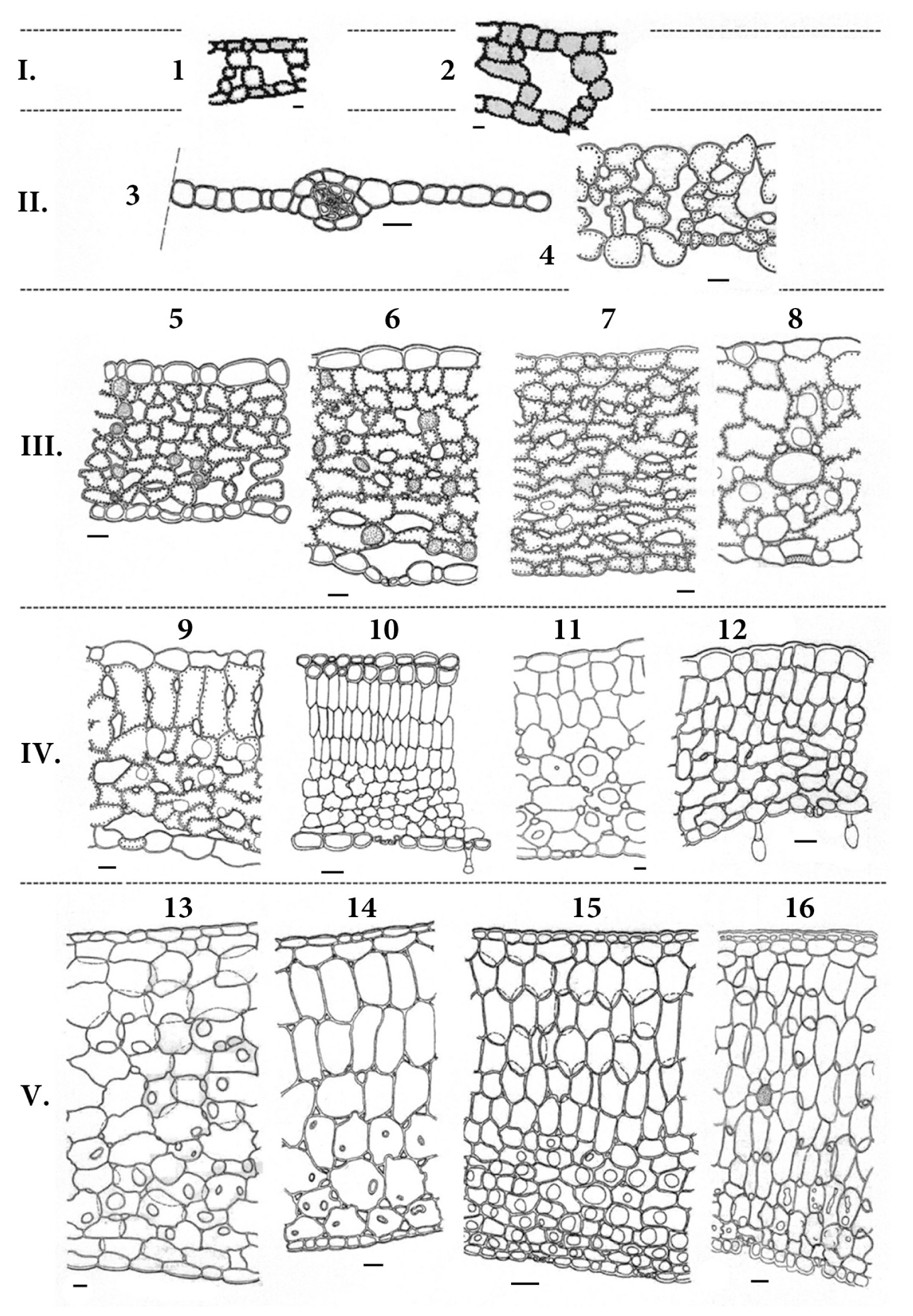Ecological anatomy of ferns fronds
Abstract
Structural types of frond anatomy are distinguished on the basis of investigation of 30 species of homosporous ferns and with regard for literature: hydromorphic, hygromorphic, mesomorphic, subxeromorphic, and subsucculent (cryptic succulent). Following frond traits are of highest adaptive value: their area and thickness, type of mesophyll, dry weight of an area unit – specific superficial density, cellular volume, and number of cells per unit of frond area.
References
Гладкова В.Н. 1978. Семейство Vittarioideae В кн.: Тахтаджян А.Л. (ред.). Жизнь растений. Т. 4: 194–195. Просвещение, Москва.
Сурова Т.Д. 1978. Семейство Hymenophyllaceae. В кн.: Тахтаджян А.Л. (ред.). Жизнь растений. Т. 4: 218–222. Просвещение, Москва.
Burrows G.E. 2001. Comparative anatomy of the photosynthetic organs of 39 xeromorphic species from subhumid new South Wales, Australia. Int . J. Plant Sci. 162 (2): 411–430.
Derzhavina N. 2008. Types of mesophyll in fern fronds and variants of their structural variability. In: Verma S.C., Khullar S.P., Cheenia H.K. (eds). Perspectives in Pteridophytes: 227–241. Bishen Singh Mahendra Pal Singh, Dehradun, India.
Derzhavina N.M. 2012. Adaptation of ferns to epiphytic mode of life: a case of Platycerium willinckii and Asplenium nidus. Indian Fern J. 29: 164–182.
Derzhavina N.M., Shorina N.I., Kondo K. 2004. A comparison of structural adaptation in three petrophyte ferns. J. Phytogeogr. Taxon., Japan 52: 143–158.
Hovenkamp P. 1986. A monograph of the genus Pyrrosia (Polypodiaceae): 55–56. Brill Leiden Univ. Press, Leiden.
Kessler M., Siorak Y. 2007. Desiccation and rehydration experiments on leaves of 43 Pteridophyte species. Amer. Fern J. 97 (4): 175–185.
Müller L., Starnecker G., Winkler S. 1981. Zur Oekologie epiphytischer Farne in Südbrasilien I. Saugschüppen. Flora 171: 55–63.
Nayar B.K. 1961. Ferns of India. Studies in Polypodiaceae. VII. Pyrrosia Mirbel. J. Indian Bot. Soc. 40: 144–186.
Nayar B.K., Chandra S. 1965. Pyrrosia Mirbel. Ferns of India – XV. Bull. Nat. Bot. Gard. 117: 1–98.
Ogura Y. 1972. Comparative anatomy of vegetative organs of the Pteridophytes. Borntraeger, Berlin – Stuttgart.
Pal N., Pal S. 1962. Studies on morphology and affinity of the Parkeriaceae. I. Morphological observations of Ceratopteris thalictroides. Bot .Gaz. 124: 132–143.
Singh T.C.N. 1963. An anatomical and ecological study of some ferns from Mussoorie (North-Wester Himalayas). J. Indian Bot. Soc. 42 (4): 475–543.
Straszewski H.R. 1915. Die Farngattung Platycerium. Flora 108: 271–310.
Stuart T.S. 1968. Revival of respiration and photosynthesis in dried leaves of Polypodium polypodioides. Planta (Berl.) 83: 185–206.
Walter H. 1968. The global vegetation. Vol. 1 & 2. Progress, Moscow.


This work is licensed under a Creative Commons Attribution-NonCommercial-NoDerivatives 4.0 International License.
The journal is licensed by Creative Commons under BY-NC-ND license. You are welcome and free to share (copy and redistribute the material in any medium or format) all the published materials. You may not use the material for commercial purposes. You must give appropriate credit to all published materials.
The journal allow the author(s) to hold the copyrights and to retain publishing rights without any restrictions. This is also indicated at the bottom of each article.





